Who Are The Edomites Today: Unveiling the Enigmatic People: Is Edom Inhabited today? A Journey Through Ancient History. Tracing the Footprints of an Ancient Civilization. From Ancient Kingdom to Modern Identity: The Edomites Revealed
The Edomites hold a unique and noteworthy place in the annals of biblical history. As a people, they trace their lineage back to Esau, the elder twin brother of Jacob, and are often recognized in the Old Testament as the neighboring rivals of the Israelites. Their homeland, Edom, located south of the Dead Sea, was a region of significant geopolitical interest in the ancient Near East.
Understanding the Edomites’ history, culture, and significance offers a fascinating glimpse into the biblical era. It enriches our comprehension of the Old Testament narratives and helps us grapple with some intriguing questions about their contemporary descendants.
In this article, we delve into an exploration of the Edomites. We will journey back to their roots in the biblical era, trace their historical transformation, locate their homeland in the present-day geographical context, and attempt to identify their descendants among us today.
Contents
Many keywords and phrases will guide our exploration, including terms like ‘Esau’s descendants,’ ‘biblical Edom,’ ‘Edomites religion,’ and ‘Edom today.’ These terms, interwoven in our discussion, will help us to unravel the historical, geographical, and cultural tapestry of the Edomites.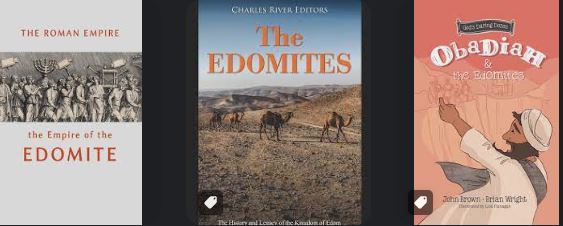
This journey into the world of the Edomites is not just a historical or biblical exploration. It’s an endeavor to understand our shared human past, diverse cultural heritage, and the intricate web of human relationships across time and geography. Join us as we uncover the narrative of the Edomites and their place in the world today.
Historical Background
Unveiling the story of the Edomites requires a journey into the historical landscapes of the Bible. The Edomites are frequently mentioned across both the Old and New Testaments, painting a picture of a people deeply intertwined with the Israelites.
The Edomites trace their lineage back to Esau, Jacob’s elder brother, also known as Israel. Their ancestral ties are established in Genesis 25:30, where Esau is referred to as Edom after he sold his birthright for a bowl of red lentil stew. This moment, a blend of fraternal rivalry and impulsive decision-making, sets the stage for the complex relationship between the Edomites and the Israelites.
Edom, the homeland of the Edomites, was a region of rugged terrain located south of the Dead Sea, stretching from the south of the Dead Sea to the Gulf of Aqaba. The kingdom was fortified by the natural defenses offered by the mountainous landscape, an aspect that heavily influenced the socio-political dynamics of the region.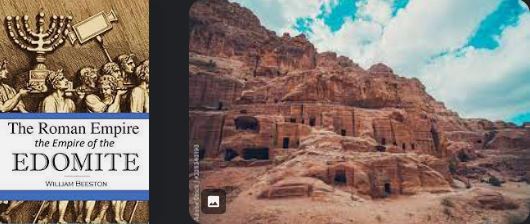
The Edomites maintained their distinct cultural and religious practices. Their worship primarily revolved around a pantheon of gods, with Qos, a god of vegetation and rainfall, recognized as their national deity. However, the biblical portrayal of the Edomite religion could be more sparse and often presented from an Israelite perspective.
Significant moments in Edom’s biblical history include their refusal to allow the Israelites passage through their land during the Exodus, as recorded in Numbers 20:18-20, and their subsequent subjugation by King David, as chronicled in 2 Samuel 8:13-14.
| Biblical Reference | Description |
|---|---|
| Genesis 25:30 | Edomites are descendants of Esau |
| 2 Samuel 8:13-14 | Edom’s defeat by King David |
| Numbers 20:18-20 | Edomites’ refusal of passage to Israel |
These historical snippets offer a glimpse into the turbulent relationship between the Edomites and the Israelites. Throughout the biblical narrative, the Edomites emerge not just as neighbors but often as rivals and adversaries of the Israelites, a dynamic that lends further intrigue to their story.
Understanding the historical context and biblical depiction of the Edomites provides an essential foundation as we trace their story into the present day.
Edomites in History Post-Bible Times
Transitioning from the biblical narratives to the subsequent historical timeline, the Edomites or Idumeans, as they were later known, continued to play an influential role in the region. The period that followed the biblical era was marked by significant sociocultural changes and shifts in power dynamics, with the Edomites experiencing their share of transformations.
In the historical period following the Old Testament narratives, the Edomites came under the rule of various regional powers. These include the Babylonians, Persians, and the Hellenistic Seleucids. However, one of the most notable moments in their post-biblical history was their incorporation into the Jewish state during the Hasmonean Dynasty (140–37 BC).
John Hyrcanus I, a Jewish high priest and ruler of the Hasmonean Kingdom, conquered Edom around 125 BC. This conquest led to the forced conversion of the Edomites to Judaism, a seminal event that further intertwined the histories of the Edomites and the Israelites. These converted Edomites, now adhering to the Jewish faith, were referred to as Idumeans, the Greek term for Edomites.
| Historical Event | Impact on Edomites |
|---|---|
| Conquest by Babylonians and Persians | Shift in political control |
| Rule by Hellenistic Seleucids | Cultural influences |
| Incorporation into the Jewish state (Hasmonean Dynasty) | Conversion to Judaism and becoming Idumeans |
The term Idumean thus bears historical significance, as it marks the transformation of the Edomites from a distinct group into an integral part of the Jewish community. This incorporation and conversion to Judaism drastically altered the cultural and religious identity of the Edomites.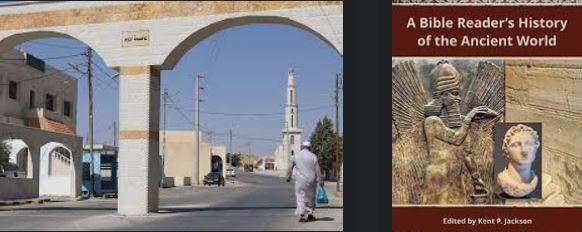
Through these shifts and changes, the historical identity of the Edomites began to blur, gradually merging into the larger Jewish and regional identities. As we trace the story of the Edomites into more recent times, these transformations play a pivotal role in understanding their modern descendants and influences.
Edom Today: Geographical Perspective
Continuing our exploration, we now shift our focus to the geographical realm. The question, “Where is Edom today?” in terms of modern geography, is fascinating, inviting us to bridge the gap between ancient scriptures and present-day cartography. It’s akin to embarking on a journey, tracing the steps of the Edomites from biblical narratives to the contemporary geographical canvas.
According to biblical accounts, the land of Edom was located southeast of the Dead Sea, encompassing the rugged, mountainous region of the ancient Near East. It stretched across a territory known for its harsh terrain, with Mount Seir being a notable landmark. The capital of Edom, according to the Bible, was Bozrah, a city of significant historical and strategic importance.
Fast forwarding to today’s world map, the region that once housed the Edomites now falls within the territories of modern-day countries. The lion’s share of ancient Edom falls within the borders of present-day Jordan, while a smaller portion extends into southern Israel.
A comparative glance at the table below offers a clearer perspective:
| Biblical Edom | Modern Day Region |
|---|---|
| Southeast of the Dead Sea | Part of Jordan, Israel |
It’s important to note that while the physical territory can be charted out with a reasonable degree of certainty, the cultural and ethnic identities that once thrived in these regions have morphed significantly over the centuries. Therefore, the Edomites’ descendants may need to correspond more neatly to the modern inhabitants of these geographical areas.
We will delve into the intriguing question of who the descendants of the Edomites might be in today’s world, considering the historical, cultural, and ethnic transformations over time. This pursuit will provide further insight into the modern echoes of the ancient Edomites and continue to unravel the complex tapestry of their legacy.
Who Are the Edomites Today: Ethnical Perspective
We’ve traversed the biblical accounts and followed the geographical footprints of the Edomites. Now, it’s time to embark on a more complex quest: Who, if anyone, are the descendants of the Edomites today? This query treads into the territory of ethnicity and identity, a landscape often characterized by controversy and nuance.
The task of tracing the lineage of the Edomites into the modern era is fraught with challenges. Drawing a straight line from one point in history is more complex than drawing a straight line from one point in history to another. Like many ancient peoples, the Edomites were subject to the ebb and flow of empires, migrations, and cultural shifts. Over time, these factors can significantly blur ethnic lines, making pinpointing modern-day descendants with absolute certainty a formidable challenge.
However, historical documents and scholarly works provide some tantalizing hints. For instance, during the Hasmonean dynasty, as mentioned earlier, many Edomites converted to Judaism. This significant event suggests that some of the Edomites may have blended into the broader Jewish population. Yet, this is a double-edged sword, as their descendants, while possibly numerous, are indistinguishable from other Jewish communities.
Furthermore, the term Idumeans, the Greek name for Edomites, resurfaces in historical records well into the Roman period, indicating that a distinct Edomite identity persisted for centuries after the biblical era. Notably, King Herod the Great, a prominent figure in the late Roman province of Judaea, was of Idumean descent.
However, any assertions about modern-day Edomites are inevitably fraught with controversy. Over the centuries, various groups have been labeled – rightly or wrongly – as descendants of the Edomites, often for political or religious reasons rather than based on empirical evidence. As such, it’s crucial to approach any claims with a healthy dose of proper skepticism and a commitment to rigorous historical and genetic research.
In sum, while we can’t point to a specific group and declare them the definitive descendants of the Edomites, we can confidently say that the Edomites’ historical and cultural impact has echoed through the ages. The exact nature of their modern-day legacy, shrouded in the mists of time, continues to be a fascinating topic for further exploration and research.
We will delve into the cultural and spiritual legacy of the Edomites, examining how their influence has shaped religious thought and practice over the centuries.
Religious Significance of Edomites
The Edomites have left a distinct and enduring imprint on the spiritual landscape of several major religions. It is not only due to their historical presence and interactions but also because of their depiction in religious texts, shaping narratives and lessons in Christianity, Judaism, and Islam.
As preserved in biblical accounts, the Edomites’ spiritual practices and beliefs offer a fascinating glimpse into their culture. The pantheon of gods they revered, such as Qos, the national god of Edom, paints a vivid picture of their spiritual life. Yet, their interaction with the monotheistic religions of their neighbors and successors is perhaps even more significant.
In Judaism, the Edomites have been featured prominently in the Hebrew Bible. The descendants of Esau, the Edomites, are often portrayed in conflict with Israel, the descendants of Jacob, in a symbolic sibling rivalry. However, it is worth noting the Book of Obadiah’s prophecy, which foretells the downfall of Edom, a narrative that has been widely interpreted and discussed among scholars and believers.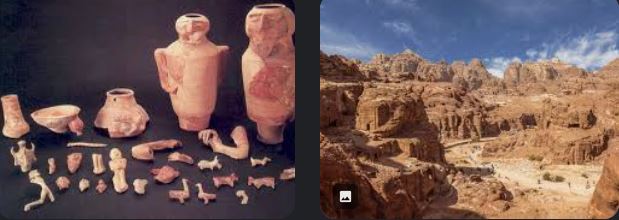
Christianity inherited the biblical accounts of the Edomites and their spiritual significance. In the New Testament, King Herod the Great, an Idumean or Edomite, plays a prominent role in the narrative of Jesus Christ’s birth. Furthermore, the symbolic use of “Edom” has been carried through Christian religious texts, often representing the worldly as opposed to the divine.
In Islam, the Edomites, though not directly mentioned, are implicitly referenced. Esau is recognized as a prophet; his descendants, the Edomites, are part of the broader narrative. Islamic tradition and exegesis, like their Christian and Jewish counterparts, have sought to understand and interpret the role and lessons of these historical figures.
The role of the Edomites in modern religious narratives continues to evolve. Often, they are seen as allegorical figures, symbolizing the struggle against worldly desires, injustice, or arrogance. They serve as a lens through which the faithful can explore brotherhood, rivalry, divine judgment, and redemption themes.
As we delve deeper into the spiritual significance of the Edomites, we find a rich tapestry of narratives and lessons as vibrant and varied as the people themselves. Their story serves as a exact testament to the enduring power of religious texts to shape our understanding of history, identity, and spirituality.
Edomites and Modern Society: A Broader Perspective
The narrative of the Edomites imbued with ancient hostilities, spiritual allegories, and cultural complexities continues reverberating through modern society. The imprints of this ancient civilization are not confined to historical or biblical studies but have permeated societal beliefs and dialogues, shaping perceptions in nuanced ways.
In the societal discourse, the term “Edomite” carries many connotations. It has often been invoked in religious and historical contexts, sometimes as a symbol of strife or worldly desires, other times as a metaphor for enduring adversities. The legacy of the Edomites, as represented in these discourses, is a testament to their enduring significance in our collective consciousness.
Understanding the Edomites and their history offers a unique lens to view the world today. It allows us to delve into the complexities of ancient societies, explore the intricate weave of religious narratives, and ponder on the enduring influence of antiquity on our modern consciousness.
Take, for instance, the exploration of identity and nationhood. The Edomites, with their distinct culture and history, remind us of the diverse tapestry of human civilization. At the same time, their powerful interactions with other ancient civilizations, often marked by conflict and convergence, resonate with the geopolitical dynamics we observe today. The narrative of the Edomites, thus, becomes a mirror reflecting the perennial issues of identity, coexistence, and conflict.
Moreover, the spiritual significance of the Edomites, as depicted in primary religious texts, continues to shape religious and moral discourses. The metaphoric use of “Edom” in these narratives provides a medium to explore themes of morality, divine judgment, and redemption. While rooted in ancient history, such lessons are intimately linked to the moral and ethical questions we grapple with today.
Understanding the Edomites and their narrative influences our perception of history, spirituality, and societal dynamics. It underscores the interconnectedness of human civilizations across time, revealing how the past continues to shape and inform the present. The study of the Edomites, therefore, is not merely an academic pursuit but a journey into understanding the human experience in its myriad shades.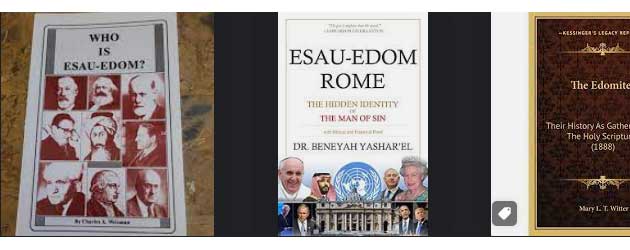
Conclusion
The journey through the annals of the Edomites has been an enlightening exploration, filled with intricate facets of history, religion, and society. We delved into their origins, traced their biblical encounters, and sought their geographical and ethical footprints in the modern world. We uncovered their spiritual significance and contemplated their impact on societal beliefs.
The narrative of the Edomites serves as a testament to the rich tapestry of human civilization. It unveils how the imprints of an ancient society continue to reverberate through time, shaping religious, societal, and cultural discourses in the present. It underscores the enduring relevance of historical narratives, reminding us that our past, far from being a distant echo, is an integral part of our contemporary consciousness.
Understanding the Edomites and their legacy also prompts us to reflect on critical themes such as identity, coexistence, and spiritual morality. It offers a window into the perennial human experiences and challenges, helping us navigate our present world’s complexities.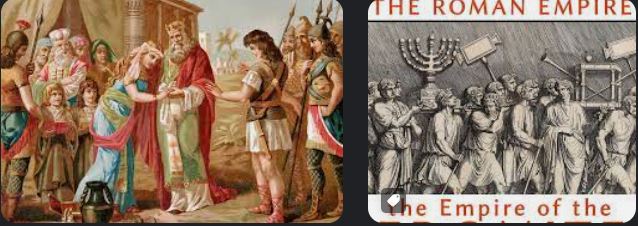
As we conclude this journey, let’s remember that exploring historical narratives like the Edomites is akin to opening a treasure chest of wisdom. It invites us to ponder, learn, and appreciate the intricate weave of human experiences across time. So, we encourage you to continue this exploration, to delve deeper into the Edomites and other historical narratives. After all, each historical record is a puzzle piece, revealing a facet of our collective journey as humanity.
References
- “The Early History of God” by Smith, Mark S. Eerdmans, 2002.
- “The Oxford History of the Biblical World.” Written by Coogan, Michael D. Oxford University Press, 1999.
- Negev, Avraham, and Gibson, Shimon. “Archaeological Encyclopedia of the Holy Land.” Continuum, 2005.
- “Kingdom of Priests: The History of Old Testament Israel.” by Merrill, Eugene H. Baker Academic, 2008.

Margarita Alexieva is a highly respected figure in the realm of journalism. Her diverse background spans numerous newspapers and magazines, where she’s crafted a multitude of pieces ranging from investigative journalism to enlightening editorials. Not only confined to print media, Margarita’s media experience also encompasses regional television stations, where her powerful storytelling abilities have resonated with a wide audience. As a dedicated journalist, Margarita’s work consistently reflects her commitment to accuracy, fairness, and an unwavering dedication to shedding light on vital issues. Her significant contributions to the media landscape continue to inform, inspire, and engage readers and viewers alike.
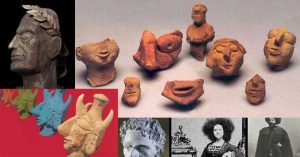
The Edomites played a significant role in the ancient Near East, and their interactions with Israel shed light on the geopolitical landscape of the time. It’s fascinating how their descendants have left their mark in modern Jordan and Israel.
As a believer, understanding the spiritual significance of the Edomites enhances my understanding of biblical narratives. It helps me grasp the complexities of faith and the intertwining threads of history and spirituality.
While the historical records about the Edomites may be scarce, the archaeological evidence gradually reveals their story. Discoveries provide valuable insights into their material culture and societal structures.
Exploring the Edomites’ cultural practices and worship reveal ancient religious expressions’ diversity. It’s intriguing to see how their beliefs intersected with those of neighboring peoples, shaping the region’s religious landscape.